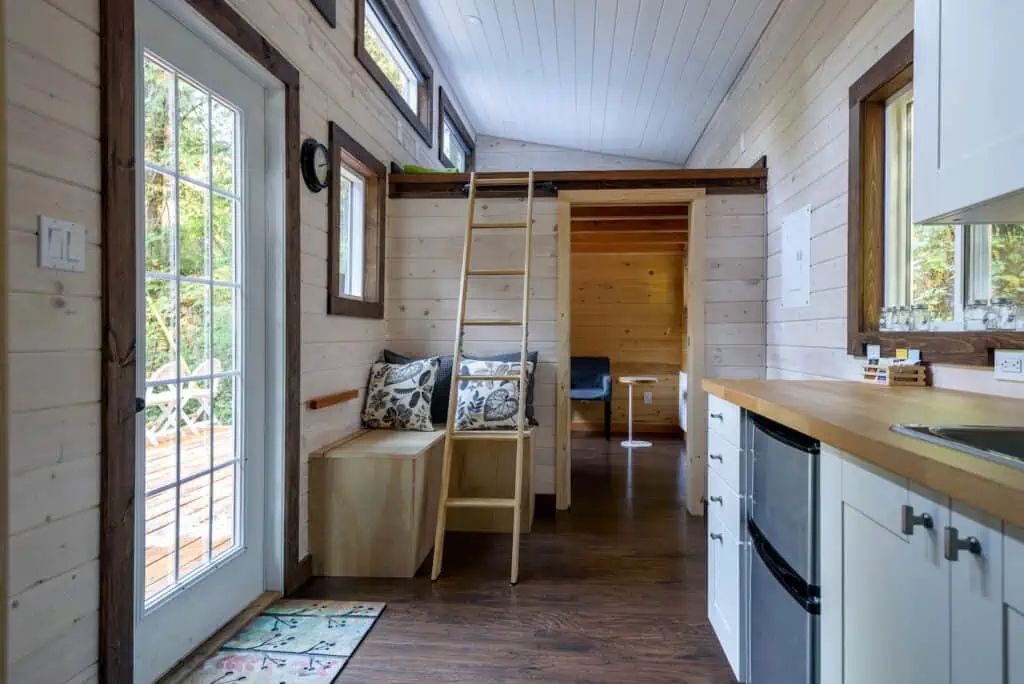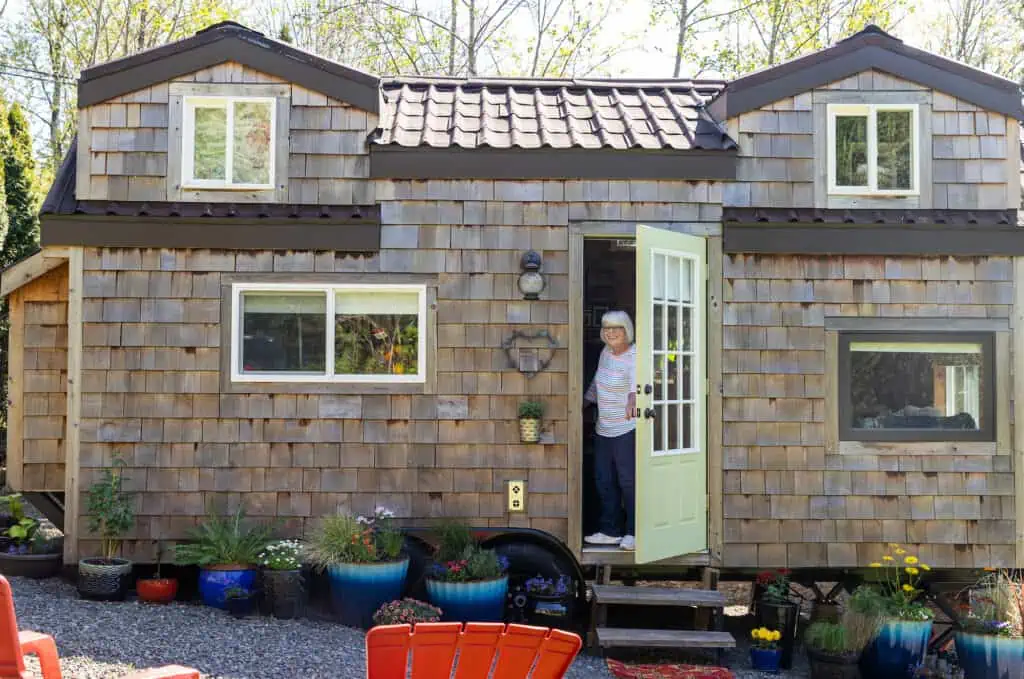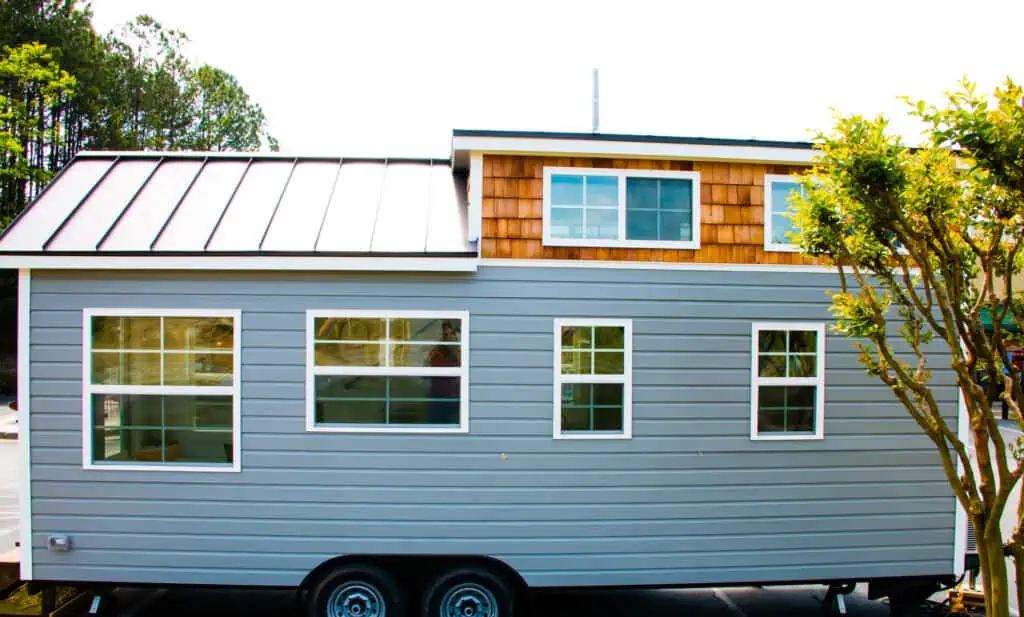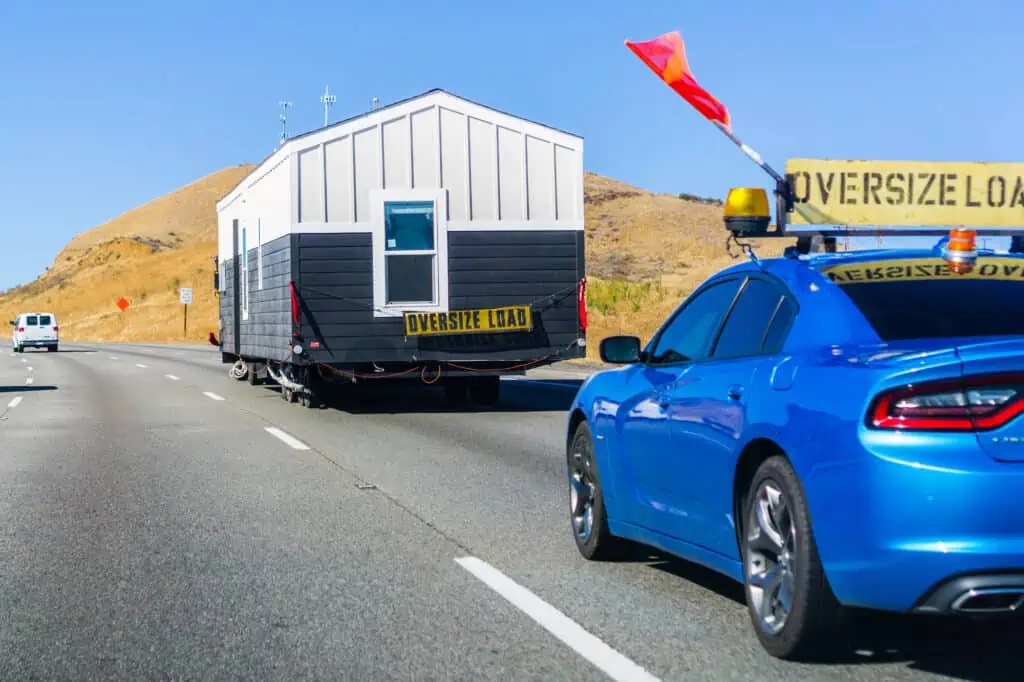With housing and utility costs skyrocketing across the country, it’s no wonder some people choose to take the alternative route and live in a tiny home. Globally, the tiny home market is expected to grow by about 4% in 2022, with most of that concentrated in the U.S.
But with downsized costs come some big trade-offs. Namely, a whole lot less space — the average size of a tiny home is just 225 square feet.
Currently, there are about 10,000 tiny homes in the U.S., which accounts for 0.36% of all total residential listings. If you’ve been curious about joining the tiny house lifestyle, read on to learn what it’s like.
Financial Implications of Moving Into a Tiny Home
The average price of a tiny home is around just $52,000 — considerably lower than the average cost of a traditional home at $535,800.
However, that doesn’t mean that building tiny homes is cheaper when you examine their costs by square footage. On average, the cost of a tiny home is $300 per square foot versus only $150 per square foot for a traditional home. If you’re looking to save money on building costs and are fairly handy, consider purchasing a tiny home building kit from Home Depot or Amazon, many of which are priced under $20,000.
“Find out if you need to have your tiny home certified or meet local zoning and building codes, which is required in some tiny home communities”
It’s important to note that if you need to borrow money to buy a tiny home, you won’t be able to get a traditional mortgage. Tiny homes are too hard for mortgage lenders to appraise, and the loan amounts are too small to make it worth it for the bank. Plus, many tiny homes are built on wheels, which disqualifies them from home loans.
Instead, you’ll need to look into alternative forms of financing:
- Chattel mortgage: These loans are available for manufactured homes that aren’t permanently affixed to the land. They come with shorter repayment terms and slightly higher interest rates than traditional mortgages.
- RV loan: Some tiny homes are built on trailers, making them eligible for RV loans. RV loans typically have lower interest rates than personal loans, and they can be used to finance both the trailer and the home.
- Personal loan: If you cannot qualify for an RV loan or do not want to go through the process of applying for one, you can consider a personal loan. Personal loans typically have higher interest rates than RV loans, but many do not require collateral.
- Home equity loans: If you already own a traditional home and have equity in it, you can take out a home equity loan to finance your tiny home. Home equity loans typically have lower interest rates than personal loans or credit cards, and the interest may be tax deductible.
There are also some hidden costs of tiny homes to keep in mind. For example, they can be expensive to insure. If you have a lot of stuff, you may need to rent a storage space to accommodate it all. Additionally, the resale value for tiny homes isn’t the same as traditional homes, and you could end up taking a loss if you sell.
What To Consider About Moving Into a Tiny Home
There are many pros and cons to living in a tiny home. And what may be considered a benefit to one person could be considered a drawback to another. That’s why it’s important to think about your ideal living arrangement and lifestyle, and whether a tiny home can support your needs.
Pros:
- Affordability: One of the most significant benefits of living in a tiny home is the lower cost of living. Tiny homes are generally less expensive to buy or build, require less maintenance, and have lower utility bills.
- Mobility: Many tiny homes are designed to be mobile, meaning that they can be moved to different locations as needed. This makes them an excellent option for people who enjoy traveling or want to live in different parts of the country without committing to a permanent residence.
- Environmental friendliness: Tiny homes are often more environmentally friendly than traditional homes, as they use less energy and resources to build and maintain. They also take up less space, which can help to preserve natural habitats and open areas.
- Simplicity: Living in a tiny home can help to simplify your life and reduce clutter. With limited space, you’re forced to prioritize your belongings and eliminate anything that you don’t truly need.
See prices for local moving labor. Read real customer reviews. Easily book your help online.
Cons:
- Limited space: The most significant drawback of living in a tiny home is the limited living space. With less square footage, you’ll have to be creative in how you use your space and may need to sacrifice certain amenities or luxuries that you’re used to. As Chloe Lieberman from Wild Abundance puts it, “In our heavily stuff-oriented culture, most of us own way more material objects than we need to live our lives. Downsizing is crucial to feeling spacious while living in a tiny house.”
- Zoning laws: Depending on where you live, you may encounter zoning laws that restrict the construction or placement of tiny homes. This can make it challenging to find a suitable location for your tiny home, especially in urban areas.
- Limited privacy: With less space, you may find it challenging to find a private area to retreat to when you need alone time. This can be especially difficult if you have a partner or children living with you.
- Limited resale value: While tiny homes are gaining popularity, they’re still a relatively new concept in the housing market. This means that they may not hold their value as well as traditional homes and may be more difficult to sell if you decide to move in the future.
Figure out what type of tiny home fits your lifestyle
Before moving, it helps to understand the various types of tiny homes that are available (yes, there’s more than one):
- Tiny house on wheels (THOW): These are usually built on a trailer or other mobile platform and can be moved from place to place. “If you’re looking for a more flexible living situation, adding wheels to your tiny house may be the way to go,” said Ran Andasan at Tiny House. “But here’s the thing: tiny houses on wheels are usually smaller than those on a foundation. So you need to be okay with a more snug living space.”
- Accessory dwelling unit (ADU): These are small, secondary dwellings are located on the same property as a primary residence. They can be used as rental units or as additional living space for family members. Keep in mind, depending on where you live, you might need quite a few permits to install or build one on your property.
- Recreational vehicle (RV): An RV is designed to be driven and moved around frequently. The most common RVs used for tiny home living include the Class C motorhome, tow-behind trailer, and large Class A motorcoach.
- Skoolie: Similar to an RV, a skoolie is made from a bus — typically, a school bus (hence the name). They’re similar to RVs, but their interiors are more customizable to suit your needs and taste.
- Shipping container: These are homes made from repurposed shipping containers, which are easy to customize and expand upon.
- Cabins/Yurts: The classic wooden cabin remains a popular tiny home option. Similarly, yurts are circular tents made from lightweight materials. Both are often used as vacation homes or glamping accommodations since they tend to be built on remote land.
Design according to your priorities

- Determine your needs: Think about how you’ll use the spaces in your tiny home and where you’ll spend the most time. What activities will you do in the home vs. away? What items or activities can you eliminate completely? Elin Headrick at CAST Architecture suggests thinking about your intended lifestyle, “Do you want a permanent residence, a vacation home, or a mobile home? What activities will you do in the house? Will you be cooking, sleeping, working, or entertaining guests? The answers to these questions will influence the layout and design elements.”
- Create a functional layout: Once you figure out what you need in a tiny home, it’s time to design a layout that supports those needs. Consider things like where you can create storage, or which areas can serve multiple purposes.
- Look for multi-use features and furniture: Julia Selwyn from Conestoga Log Cabins suggests thinking about couches and tables that can serve double duty, “With a couch that offers seating during the day and transforms into a bed at night, you can maximize the space with a single piece.” She also suggests taking advantage of tiny homes with a loft space, “It’s above you, so you are again vertically capitalizing on an area that obstructs nothing. And best of all, you can make it whatever you want.”
- Keep things clear: Clutter can easily take over a large home, so it’s extremely crucial to keep clutter at bay in a tiny home. Not only will your home look bigger, but you also won’t have to worry about bumping into or knocking things over. Consider keeping all open surfaces above your waist completely clear.
- Choose high ceilings and plenty of windows: To further open up the home, take advantage of vertical space. High ceilings will give the impression of larger rooms. Combined with lots of windows, you won’t feel so closed in. Strategically placed mirrors can help give the same effect.
- Opt for light colors: Another way to make your tiny home appear larger is to use lighter colors, particularly for the ceiling.
How To Prepare for Moving Into a Tiny Home Community
Some people like the idea of living remotely or “off the grid.” Others see tiny home living as an opportunity to join a community. If you fall into the latter camp, there are a few things you should prepare for when moving into one:
- Consider what your ideal living situation is. “One of the primary considerations is whether you want to place your tiny home in a community of solely tiny houses, an RV park, a mobile home park, someone’s yard or private set up, or maybe a combination of multiple types of units on a property,” says Abby Shank from Tiny Estates.
- Find out if you need to have your tiny home certified or meet local zoning and building codes, which is required in some tiny home communities
- Some states require homes with wheels to be registered as motorhomes, which can impact your ability to move into an RV or trailer park community
- See what types of amenities are offered by various communities, such as spacious lots, laundry facilities, parking, etc.
- Look into the requirements for electrical, sewage, and plumbing
- Check out the culture and lifestyle of the community and consider whether you’ll fit in well with the residents
Moving Your Tiny Home
One of the benefits of tiny homes with wheels is that you can change locations. Of course, some home types are easier to move than others.
“Currently, there are about 10,000 tiny homes in the U.S., which accounts for 0.36% of all total residential listings.”
Overall, moving a tiny home can be a complex process that requires careful planning and preparation. Here are some things to know about moving a tiny home to help you decide:
- You’ll need to do some prep work. This may involve removing any external features, securing the interior items, and disconnecting utilities.
- Before you plan to move your tiny home, make sure to check local and state regulations regarding the transportation of homes. Some areas may require special permits or restrictions that you need to comply with.
- Budget your move. Make sure you’ve accounted for all the costs involved in moving, including gas, insurance, and food and lodging while on the road, if necessary.
- If you’re DIYing the move, make sure you have the right equipment, are comfortable with driving, and you meet road regulations.
- Consider hiring professional movers. Moving a tiny home is generally not a job for amateurs. It could be a good idea to hire a professional moving company that has experience in moving tiny homes. Make sure to research and compare different moving companies to find the one that offers the best service and price.
Tiny homes aren’t for everyone. Before you make the leap, carefully consider whether tiny home living matches your needs and values. Do you prefer a minimalist lifestyle? Do you have the appropriate space/parking for one? Are you willing to make compromises on things like privacy and amenities? If your answer to these questions is a wholehearted “yes,” living in a tiny home might be right for you.






